Introduction
In Hinduism, few deities capture the complex intersection of divinity, strength, and compassion like Narasimha. Known for his part-lion, part-man form, Narasimha symbolizes both justice and divine intervention, stepping in during times of need to protect devotees from evil. For those intrigued by Hindu mythology and the powerful archetypes within, understanding Narasimha is a journey into one of the most striking avatars of Lord Vishnu, embodying raw force tempered with a compassionate mission.
Who is Narasimha?
Narasimha, also known as Narasimhar or simply “The Man-Lion,” is the fourth avatar of Vishnu, one of the principal deities in Hinduism. His name is derived from two Sanskrit words: Nara meaning “man,” and Simha meaning “lion.” His fierce form is a blend of human and lion, symbolizing both the intellect and the unyielding strength needed to uphold righteousness.
The Narasimha avatar is unique among Vishnu’s manifestations. Unlike other forms of Vishnu, which are typically peaceful and benevolent, Narasimha is depicted in a fearsome form with a lion’s head and claws, but a human body. This powerful combination underlines a vital message: that divine protection can manifest in any form, and justice can arrive as swiftly and fiercely as needed.
Narasimha’s Origins and Purpose
According to ancient Hindu texts, Narasimha appeared to save a devoted child, Prahlada, from the clutches of his tyrannical father, Hiranyakashipu. Hiranyakashipu, a demon king, had been granted a series of unusual boons by the creator god Brahma, making him almost invincible. The boons stipulated that he could not be killed by any creature that was fully human or animal, nor could he die indoors or outdoors, by day or by night, or by any weapon. Feeling unstoppable, Hiranyakashipu declared himself the supreme power, denying the existence of Vishnu.
However, his son Prahlada remained a steadfast devotee of Vishnu, refusing to worship his father. Enraged, Hiranyakashipu subjected Prahlada to cruel punishments, yet the child remained unharmed due to his faith. Finally, in a climactic encounter, Narasimha emerged from a pillar in Hiranyakashipu’s palace at twilight, neither fully day nor night. He attacked the demon king at the threshold, a place that was neither indoors nor outdoors, and killed him with his bare claws, which were neither weapon nor hand. In this way, Narasimha bypassed each of the demon’s boons, showcasing the divine ability to uphold righteousness against any odds.
Narasimha’s Symbolic Significance
Narasimha’s story is laden with symbolic meaning. He represents the concept that divinity can transcend traditional forms to manifest in unexpected ways. In Hinduism, Narasimha is a reminder that divine justice is ever-vigilant, and wrongdoers can never escape the consequences of their actions, no matter how clever or powerful they may believe themselves to be.
For many believers, Narasimha embodies the idea that while compassion and love are central to spiritual life, there are moments when decisive, fierce intervention is necessary to restore balance. Narasimha’s ferocity isn’t aimless violence; it’s a controlled, focused force unleashed only to protect righteousness.
The Representation of Narasimha in Art and Culture
Throughout history, Narasimha has been depicted in countless sculptures, paintings, and other forms of art across India and Nepal. In these depictions, he is often shown emerging from a pillar, his expression intense as he protects Prahlada and vanquishes Hiranyakashipu. His image is both awe-inspiring and slightly fearsome, emphasizing his role as a protector who does not hesitate to act when justice is at stake.
In South Indian temples, such as the Ahobilam temple in Andhra Pradesh, elaborate depictions of Narasimha are crafted to celebrate his protective energy. In Tamil Nadu, devotees honor Narasimhar (நரசிம்மர்) as an invincible force, praying to him for courage in the face of oppression or adversity.
The Role of Narasimha in Hinduism Today
In contemporary Hindu practices, Narasimha is revered not only as a deity but as an ideal—an unwavering protector against all odds. Many followers believe that invoking Narasimha’s name brings a layer of spiritual protection, warding off evil and safeguarding devotees from harm. Special prayers, known as Narasimha Kavacham, are recited to gain his protection, particularly in situations that feel hopeless or overwhelming.
In Hindu households, images or idols of Narasimha are often placed to signify protection. His fierce gaze, often depicted in these icons, serves as a reminder of the strength that believers can draw upon in difficult times. The rituals and prayers dedicated to Narasimha are focused on bolstering courage and resilience, qualities needed to face personal and external battles.
Narasimha and the Concept of Dharma
In Hindu philosophy, dharma, or righteous duty, is a central tenet. Narasimha’s story highlights the importance of dharma, showing that even divine beings have a duty to maintain balance in the universe. Narasimha’s intervention demonstrates that when one is steadfast in dharma, divine assistance will arrive, even if it appears unconventional.
This avatar teaches that true spiritual practice goes beyond passive devotion. Sometimes, it requires courage, action, and an unyielding stand for what is right, even against powerful forces. Narasimha’s role in upholding dharma serves as a powerful reminder for Hindus today to stay committed to their values, no matter the challenges they face.
Real-Life Connections: Narasimha’s Legacy in Modern Context
Many people look to Narasimha’s story as a source of strength when they face seemingly insurmountable challenges. A common theme in Hindu discussions and modern interpretations is the value of courage in the face of oppression. Narasimha’s image resonates with those who advocate for justice and fairness, reminding them that courage has divine support.
For example, during times of political upheaval or social injustice, Hindu communities have often rallied around the symbol of Narasimha, invoking his protective spirit to face adversity. This connection brings a sense of solidarity, as if to say, “Even if we face giants, we are protected.”
The mantra associated with Narasimha, “Om Namo Bhagavate Narasimhaya,” is recited by devotees who seek courage, especially in the face of physical, emotional, or spiritual challenges. The power attributed to this mantra emphasizes a unique relationship with Narasimha, where he acts as both protector and guide, showing devotees how to walk through life’s trials without fear.
Alternative Perspectives and Interpretations of Narasimha
In various regions, Narasimha is revered with slight variations in his narrative. For instance, in the Gaudiya Vaishnava tradition, Narasimha is seen as a loving, compassionate protector rather than a fearsome figure. Devotees interpret his form as a symbol of love that transcends fear, protecting his followers with a deep sense of care.
Some scholars interpret the story of Narasimha as an allegory. They suggest that Hiranyakashipu’s arrogance and his ultimate defeat at the hands of Narasimha reflect the idea that pride and ego are defeated by spiritual faith and humility. Hiranyakashipu’s death, symbolically, is the “death” of ego, paving the way for true devotion, as demonstrated by Prahlada.
Narasimha in Popular Culture
Beyond traditional Hindu stories, Narasimha’s image has found its way into popular culture and literature. Many contemporary authors and filmmakers draw inspiration from his story to illustrate themes of justice, sacrifice, and protection. His striking imagery—a being that is neither fully human nor fully beast—has been used to explore themes of transformation and the duality of strength and compassion.
Conclusion
Narasimha’s legend is a reminder of the complex layers within Hindu mythology, where divinity can manifest in unexpected, even fierce, forms to protect those who are devoted to truth and righteousness. Narasimha’s story of stepping in to uphold dharma resonates strongly with modern audiences, reminding them that courage is supported by divine intervention when one’s intentions are true.
For those seeking strength in difficult times, Narasimha offers a source of inspiration, reminding them that even in the darkest moments, help will come in some form. He teaches that while compassion and peace are essential, there are moments in life when assertive action is necessary. As the embodiment of divine justice, Narasimha remains an enduring symbol of the strength needed to protect the righteous and restore balance in the world.
Embracing the spirit of Narasimhar (நரசிம்மர்) invites a journey of faith, courage, and resilience—qualities as relevant today as they were thousands of years ago.

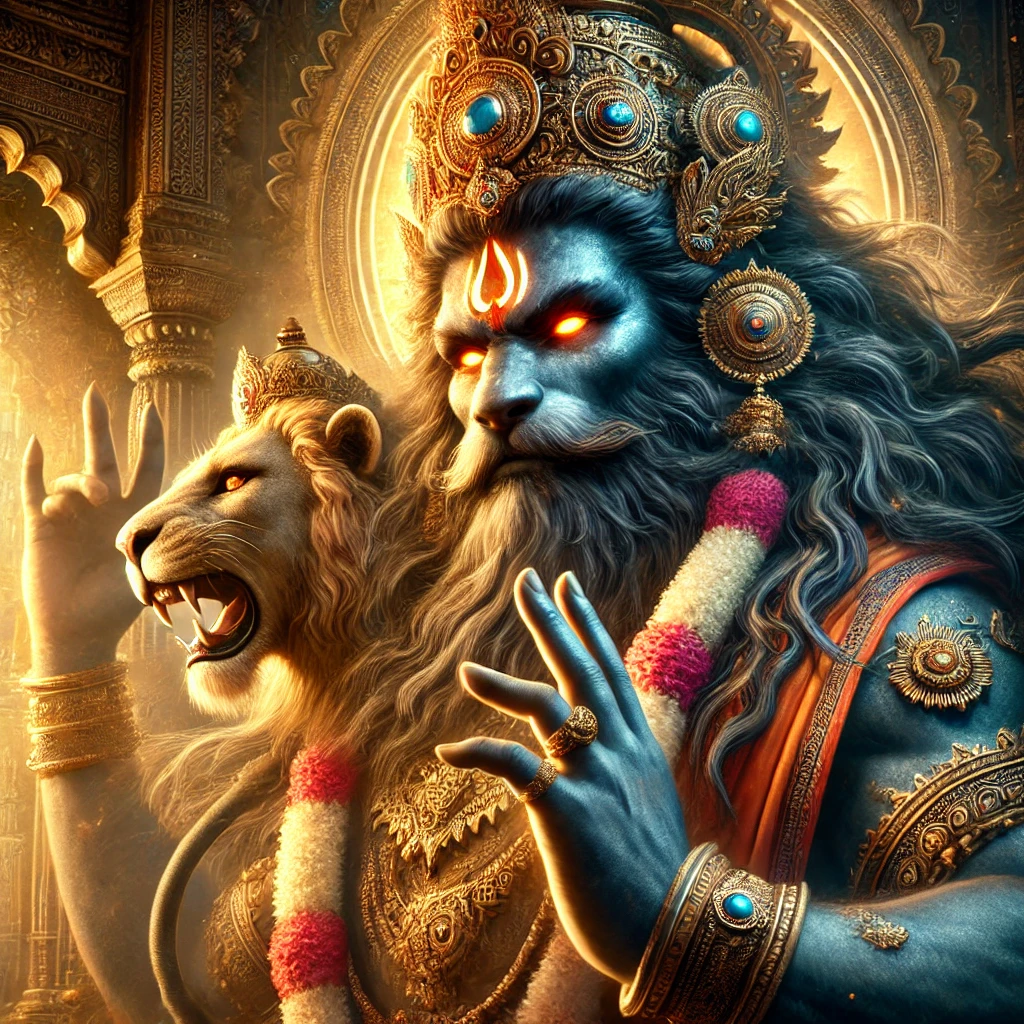
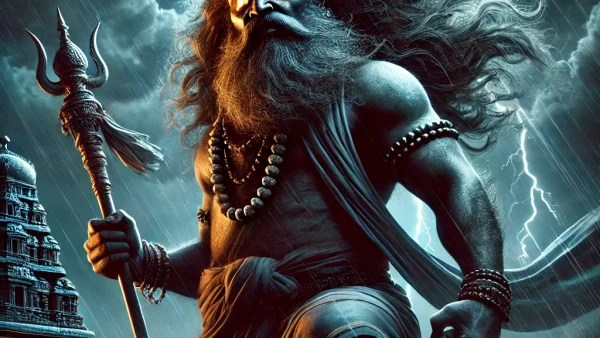
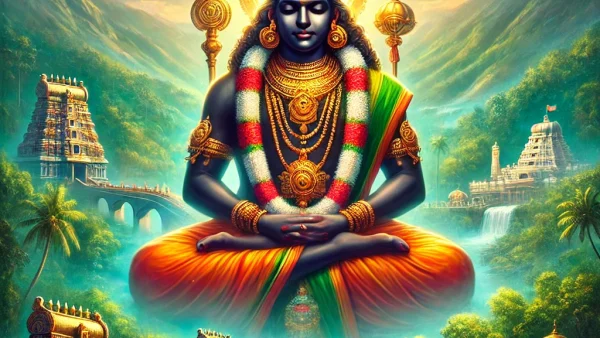
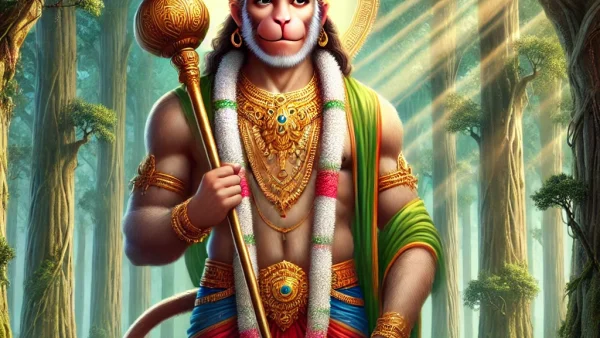
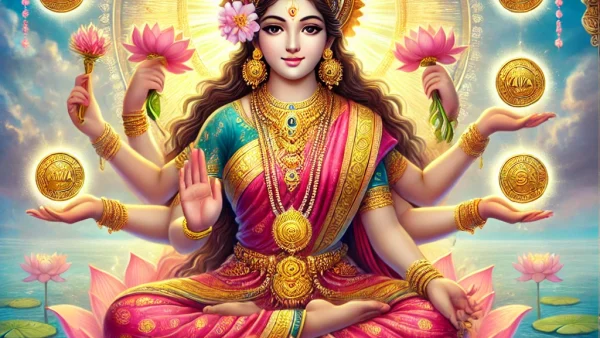

Pingback: How Do I Remove Black Magic from My Home and Family? - Dharma Pulse